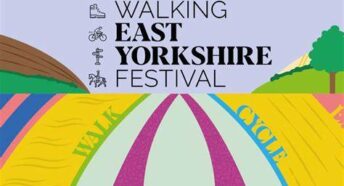Exploring the Mysteries of Labyrinths
Have you ever heard of a labyrinth and wondered what it is or why it holds such fascination for people across cultures and time? Let’s embark on a journey to uncover the secrets and significance of these intriguing structures.
What is a Labyrinth?
A labyrinth is not just a maze; it’s a path of contemplation, a journey inward. Dating back over 4,000 years, labyrinths have been used for various purposes—spiritual pilgrimages, meditative walks, ceremonial rituals, and even as choreographed dances. Unlike mazes, which have multiple paths and dead ends, labyrinths have a single, continuous path leading to the centre.
The Symbolism of Labyrinths
Labyrinths are rich in symbolism, tapping into themes of mindfulness, sacred geometry, and community. Walking the labyrinth is often seen as a metaphor for life’s journey—a winding path with twists and turns, but ultimately leading to a centre of clarity and enlightenment.
Types of Labyrinths
Labyrinths come in various forms and sizes, each with its own unique characteristics. They can be classified by type and the number of circuits they contain. For instance, there are left- or right-handed labyrinths, determined by the direction of the first turn upon entering. While ancient labyrinths predominantly leaned towards being right-handed, modern labyrinths often favour the left-handed design.
The Ever-Evolving Typology
As our understanding of labyrinths grows, it’s crucial to maintain consistent terminology. Efforts led by experts like Jeff Saward and Sig Lonegren aim to clarify labyrinth typology, ensuring accurate communication within the labyrinth community.
Discovering Ancient Treasures: The City of Troy Maze
One remarkable example of a labyrinth is the City of Troy Maze, nestled in the Howardian Hills National Landscape. This turf maze, measuring just over 26 feet across, is one of Europe’s smallest surviving mazes. Its classical seven-ringed design presents a unique journey without false pathways or dead ends.
The origins and meaning of the City of Troy Maze remain shrouded in mystery. Similar designs found in Greek and Roman artifacts hint at religious or ceremonial significance, possibly tied to themes of fertility or spiritual renewal. Some speculate that labyrinths were believed to be the abode of departed souls, accessible for guidance and wisdom.
The name “City of Troy” adds another layer of intrigue. It may reference ancient maze games brought to Italy following the fall of Troy, or it could derive from Welsh shepherds who once called it “Caerdroia,” meaning “City of Troy.”
Over the years, the City of Troy Maze has undergone transformations, with tales of re-cuttings and relocations adding to its enigmatic history. Despite the uncertainties surrounding its origins, the maze continues to captivate visitors, inviting them to embark on a journey through time and tradition.
Exploring Labyrinths Across the UK
The City of Troy Maze is just one of many labyrinths scattered throughout North Yorkshire and beyond. Thanks to resources like the Labyrinths in Britain website, enthusiasts can discover and explore a wealth of labyrinthine wonders across the UK.
As we delve into the mysteries of labyrinths, we uncover not only ancient symbols but also timeless wisdom, inviting us to embark on a journey of self-discovery and contemplation. So, next time you encounter a labyrinth, step inside and let its winding paths guide you on a transformative voyage of the soul.
Some of the labyrinths in North and East Yorkshire are:
- Alkborough Cemetery – Labyrinth inset into tombstone
- Bolton Castle, Leyburn – Hedge maze viewable from castle
- Bridlington Priory – Planted labyrinth in priory grounds
- Burton Agnes Hall – Hedge maze in gardens open to public
- City of Troy, Dalby – Historic turf labyrinth on roadside verge
- Danby Lodge National Park Centre, Danby – Turf labyrinth in playground
- Escrick Maze, Escrick – Overgrown hedge maze
- Filey Maze – Brick path maze in public park
- Foredyke Green, Hull – Turf and gravel path labyrinth in public park
- Helmsley Walled Garden – Mown labyrinth in gardens
- Hull & East Riding Museum, Hull – Replica of Roman mosaic labyrinth from Harpham
- Julian’s Bower, Alkborough – Historic turf labyrinth
- Lavender Maze, Terrington – Maze at lavender farm
- Pickering Road Orchard, Hull – Turf labyrinth in community orchard
- Rowntree Park, York – Grass playground maze in public park
- Ryedale Folk Museum, Hutton-le-Hole – Brick and turf labyrinth in museum garden
- Sentry Circle, Northallerton – Turf labyrinth at campground
- Spa Park, Ripon – Grass maze with millstone centre
- St. John’s Church, Alkborough – Labyrinth in church porch and stained glass window
- Stockeld Park, Wetherby – Hedge maze at adventure park
- Stump Cross Caverns, Pateley Bridge – Stone maze at tourist attraction
- The Trinity Centre, Middlesbrough – Brick & shale labyrinth in church courtyard
- Wolds Way Lavender, Wintringham – Willow maze at lavender farm
- Wydale Hall, Brompton-by-Sawdon – Labyrinth in retreat centre garden
Printable Labyrinths for Your Creative Journey
Unlock the transformative power of labyrinths with our downloadable designs, available for both finger labyrinths and print materials. These versatile templates are yours to personalize, whether you choose to paint, colour, decorate with glitter or ribbon, or imbue with personal messages and meditations. Simply laminate them for long-term, repeat use, allowing you to embark on your labyrinth journey whenever inspiration strikes.
Credit Information for Print Use
If you intend to use these labyrinths in print, such as brochures, newspapers, or magazines, please include the following credit information:
- Classical Labyrinth Drawing:
Original drawing by Jeff Saward, final graphic by Vicki Keiser.
Download PDF (50KB) - Chartres Labyrinth Drawing:
Original drawing by Robert Ferre, final graphic by Vicki Keiser.
Download PDF (96KB)
Explore even more printable finger labyrinths on our World Labyrinth Day website: www.worldlabyrinthday.org/resources/finger-labyrinths
Unleash your creativity and embark on a journey of self-discovery with these beautifully crafted labyrinths.








